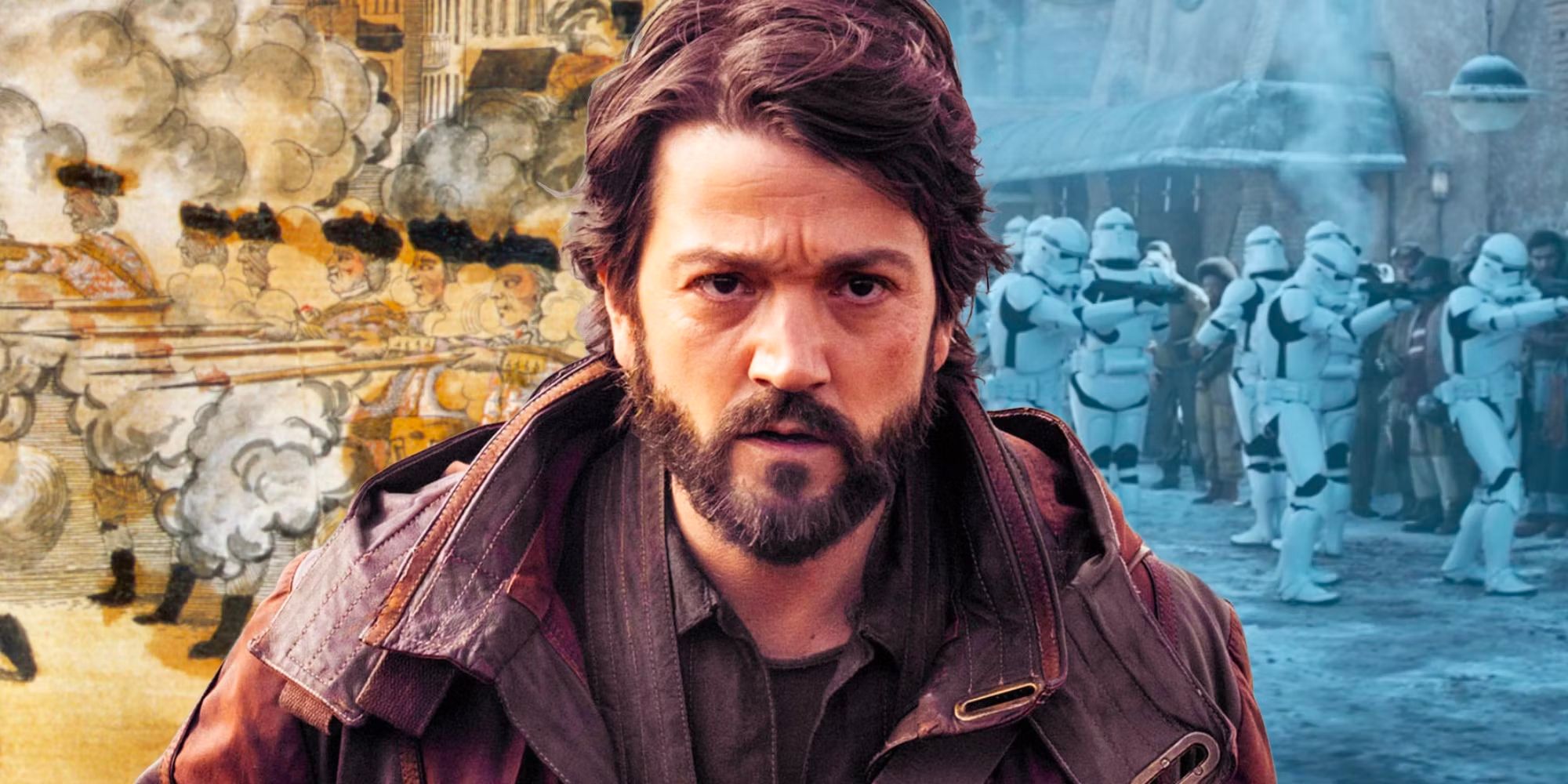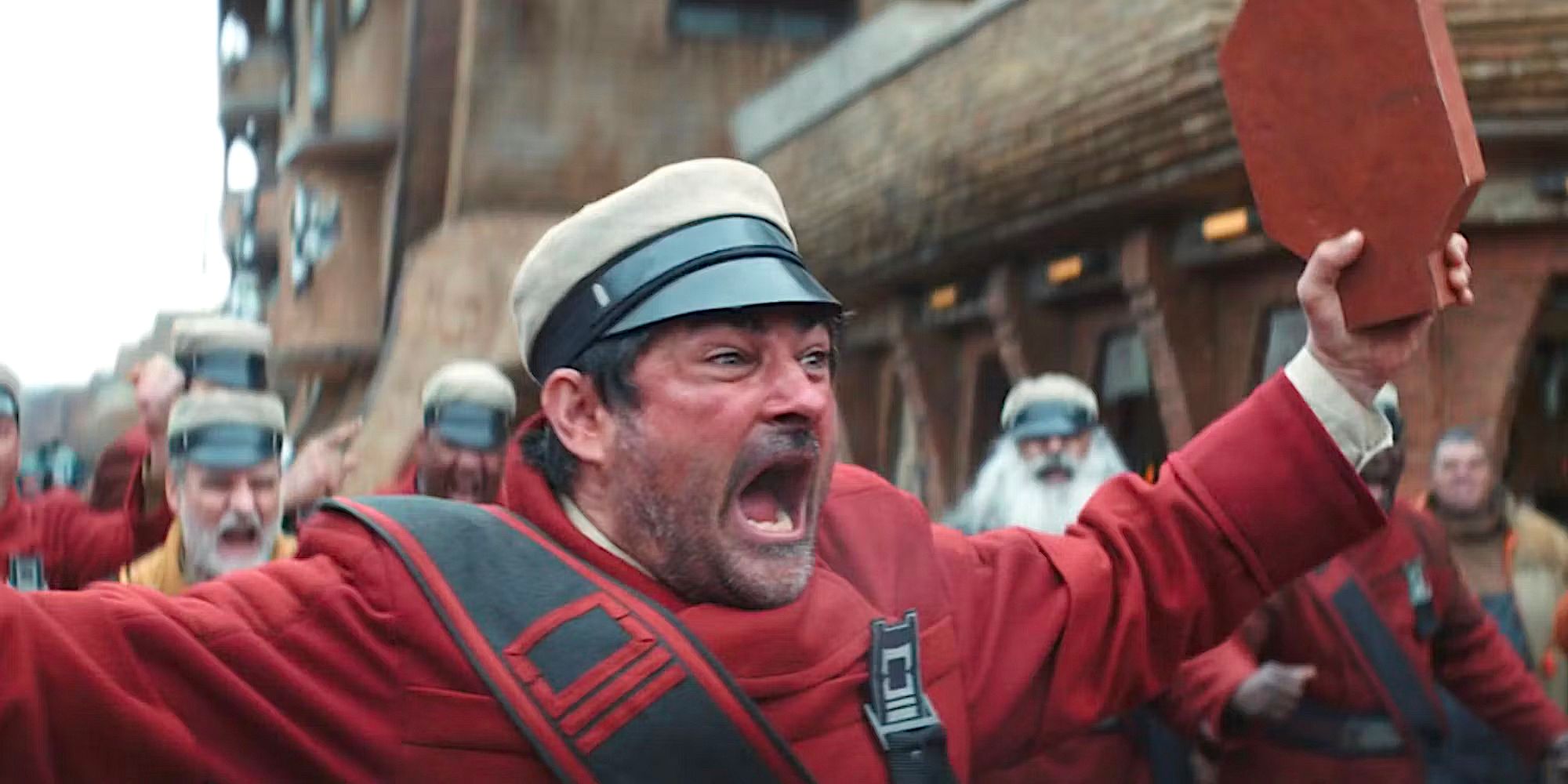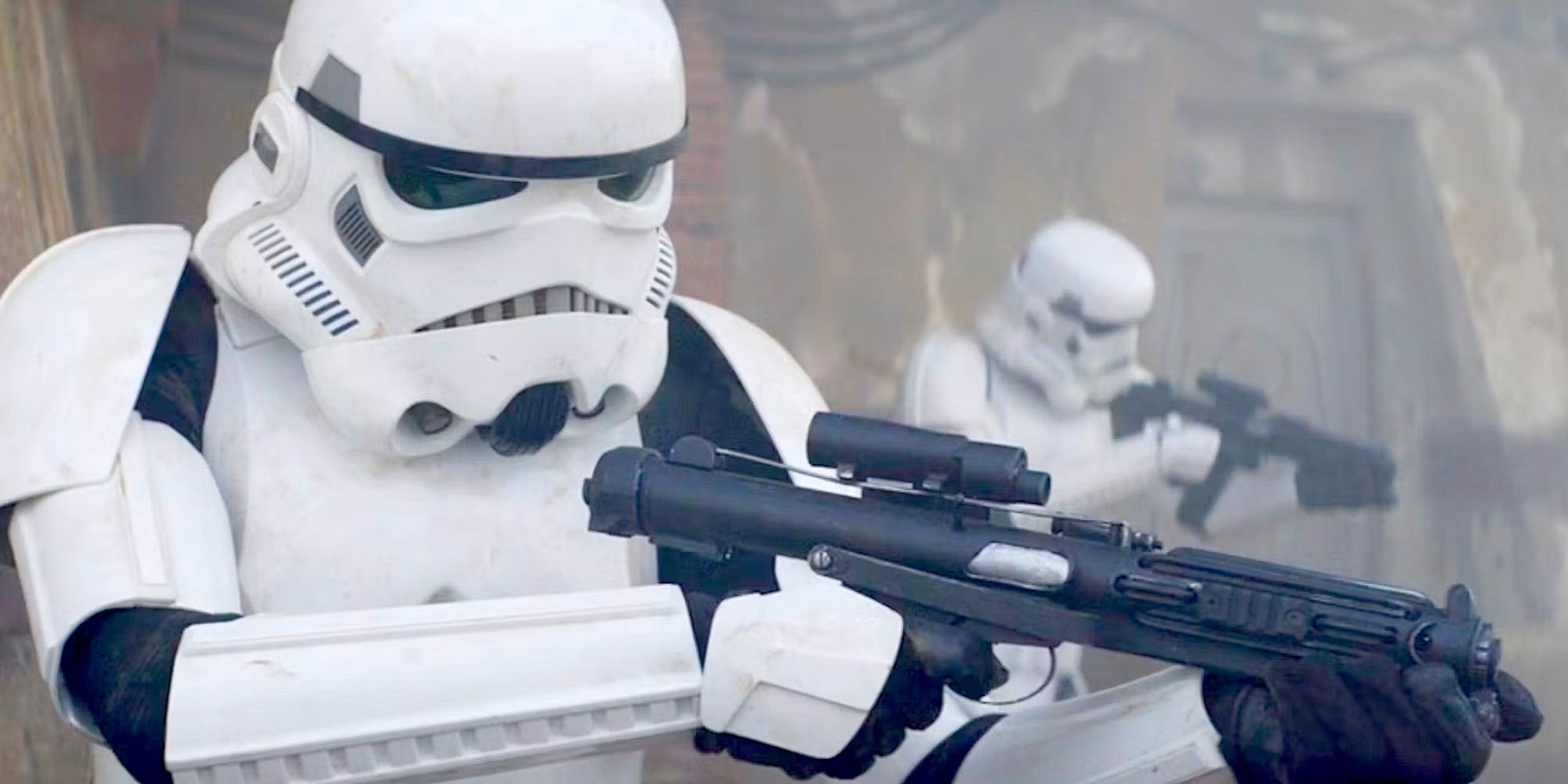Warning! Spoilers ahead for Star Wars: Andor episode 12Andor's parallels to real-life history prove just how crucial the show's story is to the original Star Wars trilogy. In the Andor season 1 finale, Cassian (Diego Luna) returns to Imperial-occupied Ferrix for the funeral of his mother, Maarva. A pillar of the community, Maarva's final message to the people of Ferrix is one of rebellion, a posthumous act that turns the large procession into a revolution against the Empire, which ironically allowed the gathering as a means to lure and capture Cassian.
Remarkably, this riot on Rix Road carries parallels to the real-life Boston Massacre of 1770, the crucial incident that united the American Colonies against the British Empire and led to the Revolutionary War. The incident with the Stormtroopers in the Andor season 1 finale also plays a similar role in the Galactic Civil War. With the people rising up in significant numbers on Ferrix, this will likely be the major spark that ignites true rebellion across the galaxy and the birth of the Rebel Alliance. As such, the historical parallels in Andor flesh out the realism behind the real-life concepts of oppression and rebellion, perfectly setting up the conflict established by George Lucas in the original trilogy.
How Ferrix Changes Star Wars' Rebellion
Paying off Luthen Rael's belief that "oppression breeds rebellion," Ferrix is the perfect microcosm of Imperial tyranny across the entire galaxy. The more the Empire tries to exert more control, the more people start rising against them. Likewise, Cassian listens to Nemik's rebellion manifesto before the funeral. As Nemik claims, the systems of oppression will eventually break under the weight of continued resistance led by those willing to push back: "One single thing will break the siege." Ferrix looks to be that single event that gives birth to the Alliance — which has yet to form by the end of Andor season 1.
In 1770, the Boston Massacre on King's Street was the result of growing and persistent tensions. British soldiers shot into a crowd of colonists who'd grown tired of the oppression from a tyrannical Empire and were throwing debris in their anger — largely motivated by a loyalist murdering a young boy a month prior. Following the deaths of 11 people, the Boston Massacre became a lightning rod that was used to unite the American Colonies. As such, it's not hard to see Ferrix and the riot on Rix Road as the fictional parallel, fulfilling that same role for the Galactic Civil War in the original trilogy.
Star Wars Paralleling Real History Fits With George Lucas' Vision
It should be noted that Star Wars having real-life parallels is nothing new. George Lucas has always been vocal that the war of the original trilogy was largely inspired by Vietnam, with the Rebels as the Viet Cong and America as the Galactic Empire, plus it paralleled the American colonists taking on the might of the British Empire. Naturally, the Nazi regime of World War II was a big inspiration for the Empire as well. As such, Andor serving as the fictional counterpart and parallel to the Boston Massacre fits incredibly well with Lucas's vision for Star Wars, elevating the conflict of the original trilogy even further.



